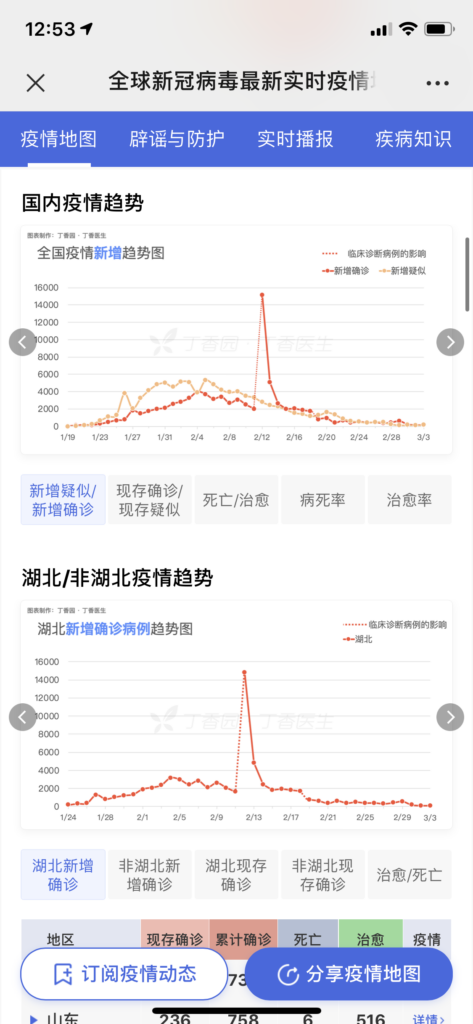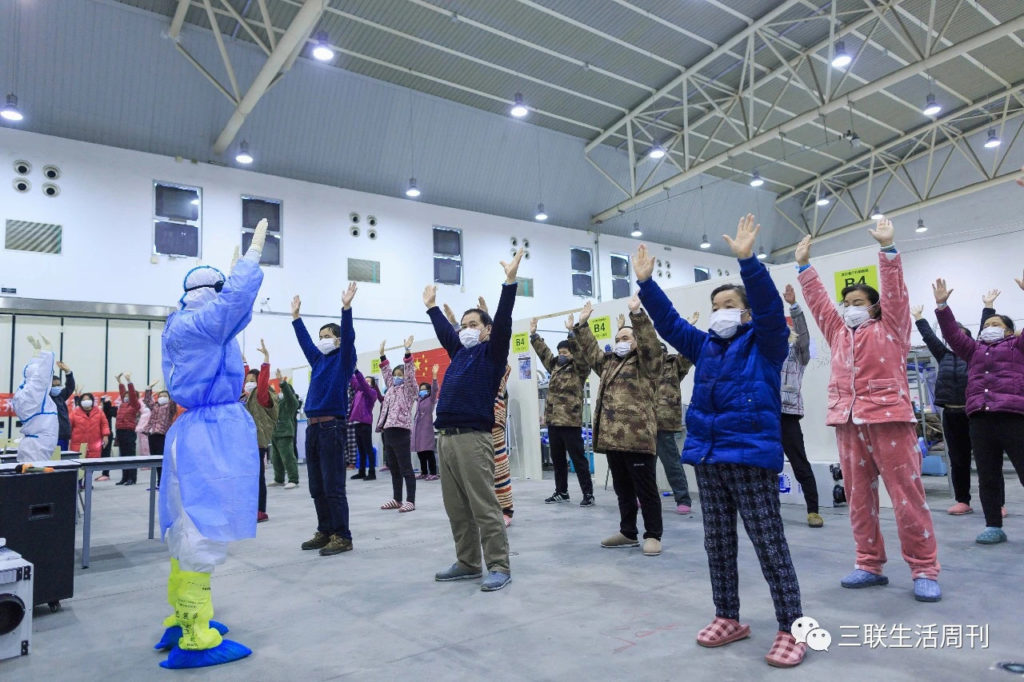As coronavirus spread across China, fear also becomes contagious among the population. Driven by fear and vulnerability, the public becomes much more susceptible to all different types of persuasive rhetorics. Under such condition, people get emotional more easily, more likely to follow the crowds and less likely to take time to check facts. As an international student coming from China, every time I check the news and my friends’ WeChat posts I see a lot news, editorials and rumors using various persuasion techniques to inform/convince/encourage/educate the public. Although I am not directly influenced by the pandemic, I find out that my mood these days fluctuate under the influence of the pandemic information online. Therefore, I want to dig into different persuasion techniques arise in China around coronavirus to understand how these rhetorics influenced our behaviors in this special time.
Data

total no. diagnosed, death, severe 
Real-time map of national infection 
daily trend; 
detailed timeline of a day about virus
After the public’s major upset about government’s attempt to deny and suppress the coronavirus situation, several official medical accounts on WeChat developed their own infection map to help improve the transparency and educate the public about the situation with graphs and colors. With the help of big data, these platforms greatly alleviate the imbalance of information compared to SARS pandemic in 2003, which helped soothe the public’s anger about the authority.
Stories
When seeing those patients who are suffered turns into numbers and points on the graph, people start to lose the empathy towards the individual and only get overwhelmed by the number. Thanks to different journalists risked their safety to interview those people, our attentions are able to focus on the individuals to see how their lives are impacted – mid-aged woman who are separated from her husbands for two months, Down Syndrome kid who lost his dad, tiny businesses are facing possible bankrupt etc. I still remember a quote that constantly appear in these news – it is not 3000 people died in this pandemics, it is 3000 families suffer.” Even though they are telling the same thing the later expression encourages people to think in a very intimate scale .




